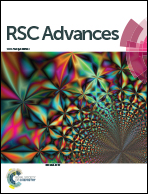A LiPO2F2/LiPF6 dual-salt electrolyte enabled stable cycling performance of nickel-rich lithium ion batteries
Abstract
In this work, a dual-lithium salt was proposed for constructing an electrolyte for high energy density lithium ion batteries. LiPO2F2 was composed with traditional LiPF6 to enhance the high voltage performance of the electrolyte. The electrochemical performance of the NCM811/Li cells with LiPO2F2/LiPF6 dual-lithium salt at 2.8–4.5 V was investigated. It was found that the dual-lithium salt can inhibit the oxidative decomposition of the electrolyte, suppress the dissolution of the transition metal ions in the electrode material, and reduce the side reaction between the transition metal ions and the electrolyte. We believe that the strategy of a dual-lithium salt electrolyte may provide a new idea to stabilize the electrode/electrolyte interface at high voltage, which is very important for developing high energy density batteries.

- This article is part of the themed collection: Editors' Collection: Lithium-ion batteries and beyond - materials, processes and recycling


 Please wait while we load your content...
Please wait while we load your content...